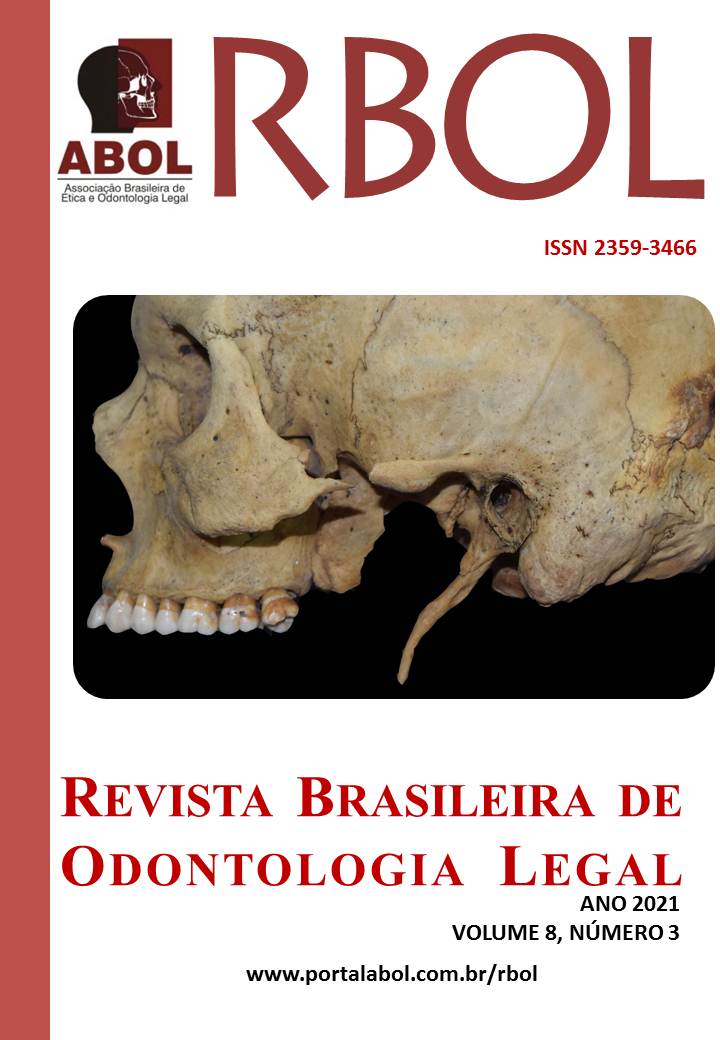Comparison of two methods of palatal rugoscopy in human identification.
DOI:
https://doi.org/10.21117/rbol-v8n32021-375Keywords:
Palate; Forensic Dentistry; Human IdentificationAbstract
The Forensic Dentistry is being increasingly requested for obtaining data that allows human identification. Among many of its tools, the analysis of the palatal rugae stands out as an effective device for the identification, but more studies are needed to allow an establishment of standards that increases the success rate. So, this study had the main goal to ascertain if there is a difference between choosing the execution of the rugoscopy by visual comparison or by software. This way, it started from a sample of 30 individuals (n=30), in which all of them had their palates photographed, a plaster model from the upper arch with the rugae highlighted with graphite obtained, and finally a photograph of each plaster model made. Two analysis have been done, being the first one a comparison of the photographs of the models and the intraoral ones, on a software by overlapping them, and the second was a comparison between the plaster models and the intraoral photographs, visually. With four evaluators in each analysis, the results from the compatibility among model-photo and photo-photo were registered. In the statistical analysis of this results, the t student t (P=0,053) and the Kruskal-Wallis (P=0,990) tests were performed, and they demonstrated the non-existence of significant difference between the results of the two analysis, nor variance statistically significant between the groups. Being so, it can be said that the software could be simultaneously used with a visual analysis.
Downloads
Published
Issue
Section
License
Os autores deverão encaminhar por email, devidamente assinada pelos autores ou pelo autor responsável pelo trabalho, a declaração de responsabilidade e transferência de direitos autorais para a RBOL, conforme modelo abaixo.
DECLARAÇÃO DE RESPONSABILIDADE E TRANSFERÊNCIA DE DIREITOS AUTORAIS
Eu (Nós), listar os nomes completos dos autores, transfiro(rimos) todos os direitos autorais do artigo intitulado: colocar o título à Revista Brasileira de Odontologia Legal - RBOL.
Declaro(amos) que o trabalho mencionado é original, não é resultante de plágio, que não foi publicado e não está sendo considerado para publicação em outra revista, quer seja no formato impresso ou no eletrônico.
Declaro(amos) que o presente trabalho não apresenta conflitos de interesse pessoais, empresariais ou governamentais que poderiam comprometer a obtenção e divulgação dos resultados bem como a discussão e conclusão do estudo.
Declaro(amos) que o presente trabalho foi totalmente custeado por seus autores. Em caso de financiamento, identificar qual a empresa, governo ou agência financiadora.
Local, data, mês e ano.
Nome e assinatura do autor responsável (ou de todos os autores).

